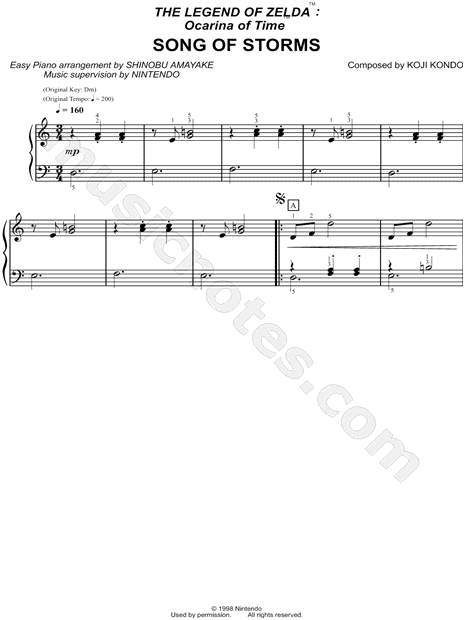Song Of Time Piano Notes
Does anyone have the notes for the song of time from the Zelda games? 8notes.com Forums Recorder Does anyone have the notes for the song of time from the Zelda games? 19:01 on Friday, November 28, 2003. Mar 18, 2018 Zelda's Lullaby (The Legend of Zelda: Ocarina of Time) easy piano letter notes for beginners, suitable to play on Piano, Keyboard, Flute, Guitar, Cello, Violin, Clarinet, Trumpet, Saxophone, Viola and any other similar instruments you need easy letters notes for. Piano notes for legend of Zelda song of time? It's best to visit a music shop and find the sheet music for the song. Piano sheet music will list all of the piano notes for the song as well as.
9 ip ip 0 u oa q ps ps 0 u oa9 ip ip 0 u oa q ps ps 0 u oa9d g ipz ip 9d g oazqxcxcxl aojj ipd g h jq ipj ipd g h ef up9 ip ip 0 u oa q ps ps 0 u oa9 ip ip 0 u oa q ps ps 0 u oa9d g ipz ip 9d g oazqxcxcxl aojj ipd g h jq ipj ipd g h jq dz9 ip ip 0 u oa q ps ps 0 u oa9 ip ip 0 u oa q ps ps 0 u oaAlternative9ey 9Ey uiuiutee9qwe e9qw09ey 9Ey uiuiutee9qwe e9Press 'Play' to open Virtual Piano in a separate window and use your computer keyboard to play this song. Since its inception, Virtual Piano has been used as a learning tool in the world’s most prestigious schools – it has helped young children to get a feel for music – it has been the stepping stone for some of the world’s greatest artists. Virtual Piano is fast becoming a form of expression and communication between different cultures and regions of the world – crossing language, space and time. Our vision is to spread the joy of playing the piano to every corner of the globe. Our goal is to engage and inspire people of all ages and abilities, to nurture a passion for music.
The two numbers in the time signature tell you how many beats are in each measure of music. A piece with a time signature of 4/4 has four quarter note beats; each measure with a 3/4 meter has three quarter note beats; and each measure of 2/4 time has two quarter note beats.A time signature of 4/4 meter does not mean that each measure has only four quarter notes. It means each measure has only four beats. These beats may contain half notes, quarter notes, eighth notes, rests, whatever the composer wants, but all note and rest values must combine to equal no more or less than the top number (or numerator) of the time signature.
You can recognize the tunes of three common time signatures. Common time: 4/4 meterThe most common meter in music is 4/4.
It’s so common that its other name is common time and the two numbers in the time signature are often replaced by the letter C. In 4/4, the stacked numbers tell you that each measure contains four quarter note beats. So, to count 4/4 meter, each time you tap the beat, you’re tapping the equivalent of one quarter note. Waltz time: 3/4 meterIn the second most common meter, 3/4, each measure has three quarter note beats. Of course, this doesn’t mean that only quarter notes exist in this meter. You may have one half note and one quarter note, or you may have six eighth notes, but either way, the combination equals three quarter note beats.In 3/4 meter, beat 1 of each measure is the downbeat, and beats 2 and 3 are the upbeats. It’s quite common, though, to hear accents on the second or third beats, as in many country music songs.
March time: 2/4 meterChop a 4/4 meter in half and you’re left with only two quarter note beats per measure. Not to worry, though, because two beats per measure is perfectly acceptable. In fact, you find 2/4 meter in most famous marches. The rhythm is similar to the rhythm of your feet when you march: “left-right, left-right, 1-2, 1-2.” You start and stop marching on the downbeat — beat 1.

6/8 timeIf you notice that a time signature of 6/8 doesn’t have a “4” in the bottom (denominator) position, you’re no doubt already thinking that it can’t be a meter based on quarter notes. If you’re thinking that it might be a meter based on eighth notes, you’re right on time.
6/8 meter is a grouping of six eighth notes per measure.Like the waltz, beats in 6/8 meter are grouped in threes, but there are two groups. 6/8 has an added down-up beat pattern on the first eighth note of each group — beats 1 and 4.
Letter Notes To Piano Songs
Showing the emphasis using italics, you count a measure of 6/8 with one count for each eighth note beat, as follows: One, two, three, four, five, six. Beat 1 is a stronger downbeat than 4, so this beat pattern can feel like two broader beats (down-up), each with its own down-up-up pattern within.